Maine commission calls for new probe of impacts of Agent Orange use at Base Gagetown
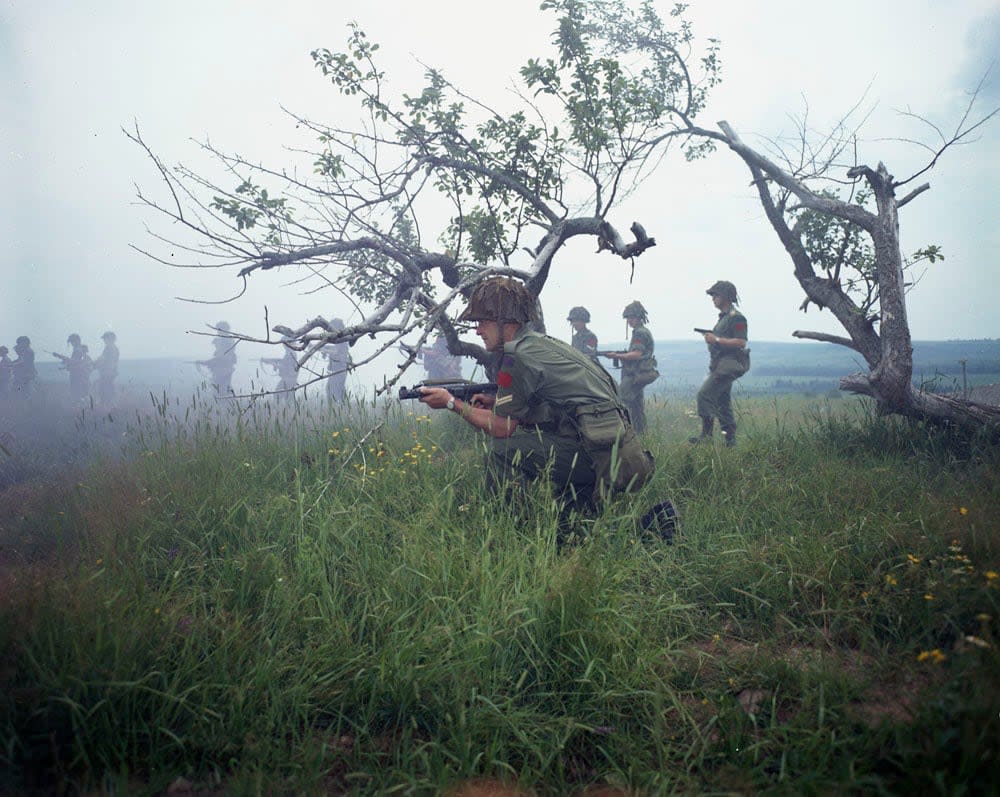
A Maine commission has called for a new probe of the historical use of Agent Orange and other herbicides at a New Brunswick military base because it says the data and analysis used in a Canadian report that found most people at or near the base were not at risk for long-term health effects was "incorrect" and "biased."
The Gagetown Harmful Chemical Study Commission, created last summer to study the impacts of exposure to Agent Orange and other harmful chemicals on Maine National Guard veterans who trained at 5th Canadian Division Support Base Gagetown in Oromocto, recently presented its recommendations to the Maine legislature's veterans and legal affairs committee.
It said the committee should invite experts to review the Canadian Forces Base Gagetown Herbicide Spray Program 1952-2004 Fact-Finders' Report to determine whether the existing data should be reanalyzed or new studies conducted.
"The commission, as a result of presentations by individuals who are connected to Base Gagetown and to the work of the Fact-Finding Project, find that the data and analysis within those reports is incorrect, biased, and based on, in some cases, incomplete data and poor study design — at times exacerbated by the rapid period in which these reports were required to be conducted and issued," the 10-member commission, co-chaired by Senate President Troy Jackson and House member Ronald Russell, said.
"Additionally, the reports and their underlying data are not widely available and accessible, which undermines their scientific credibility and usability, and the reports were issued over 15 years ago; significant new knowledge about these chemicals, scientific methods and the health of those connected to Base Gagetown have since emerged and been developed."
Canadian veterans group encouraged
Gary Goode, chair of Brats In The Battlefield, a Canadian Gagetown veterans advocacy group whose mandate is to lobby the federal government for an independent public inquiry into pesticide use at the base and adjacent communities from the mid-1950s until present, is encouraged.
"This is coming to light and it's up to the government now which way they want to go," said Goode, an infantry soldier at Base Gagetown from 1967 to 1971, who lost his right lung to cancer and received a one-time ex gratia payment of $20,000 from Ottawa.
In 1966 and 1967, the Canadian government allowed the U.S. military to test herbicides, including Agent Orange and Agent Purple, at Base Gagetown. The U.S. sprayed Agent Orange during the Vietnam War to remove trees and dense tropical foliage that provided enemy cover.
The International Agency for Research on Cancer, which is part of the World Health Organization, has classified one of the chemicals in Agent Orange, sometimes referred to as dioxin, as "known to be carcinogenic to humans."
The Canadian fact-finding report, released more than 15 years ago, concluded only specific populations, including those directly involved with herbicide applications and brush clearings soon after application, were at a greater risk for developing adverse health outcomes.
Too many lives [are] on the line to accept the status quo any longer. — Gary Goode, Brats In The Battlefield
Compensation payments in Canada were limited to $20,000 for military personnel or surviving family who could prove they were exposed to Agent Orange and as a result had been diagnosed with one of 12 illnesses associated with the defoliant.
In November, Goode, who lives in Fernie, B.C., testified remotely to the commission and provided military documents obtained through access to information, which he contends show wider-spread usage of chemicals at Base Gagetown over a much larger area than previously reported.
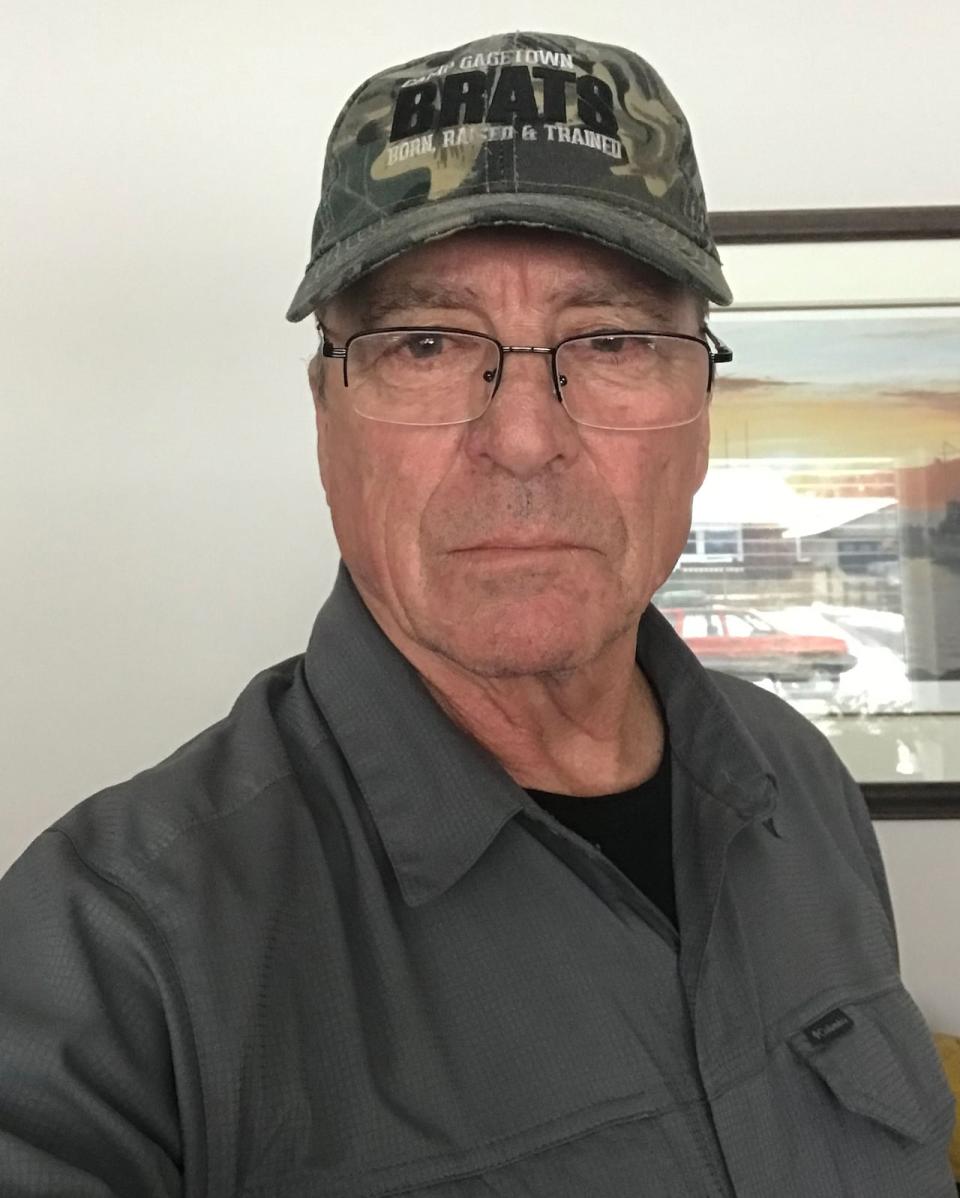
Gary Goode, a Gagetown veteran and chair of Brats In The Battlefield, testified to the Maine commission. (Gary Goode)
"There were 6,504 barrels of this stuff sprayed from 1956 to 1984. And this stuff was sprayed over 181,000 acres," said Goode, who worries soil at the base may still be contaminated.
The Department of National Defence maintains only two barrels of Agent Orange and Agent Purple were tested in 1966 and 1967 and that spraying was limited to seven days over a remote 138-acre area, under strictly controlled conditions, with little to no wind.
"We've had enough," said Goode.
"It's going to become an election issue.… Too many lives [are] on the line to accept the status quo any longer."
No plans for further studies here
The Canadian government has no plans to conduct further studies, according to Andrew McKelvey, a spokesperson for the Department of National Defence.
"DND, along with Veterans Affairs Canada and Health Canada, already launched and completed an intense and fulsome fact-finding investigation to understand the health and environmental risks associated with the past use of registered and unregistered herbicides at Base Gagetown," he said in an emailed statement.
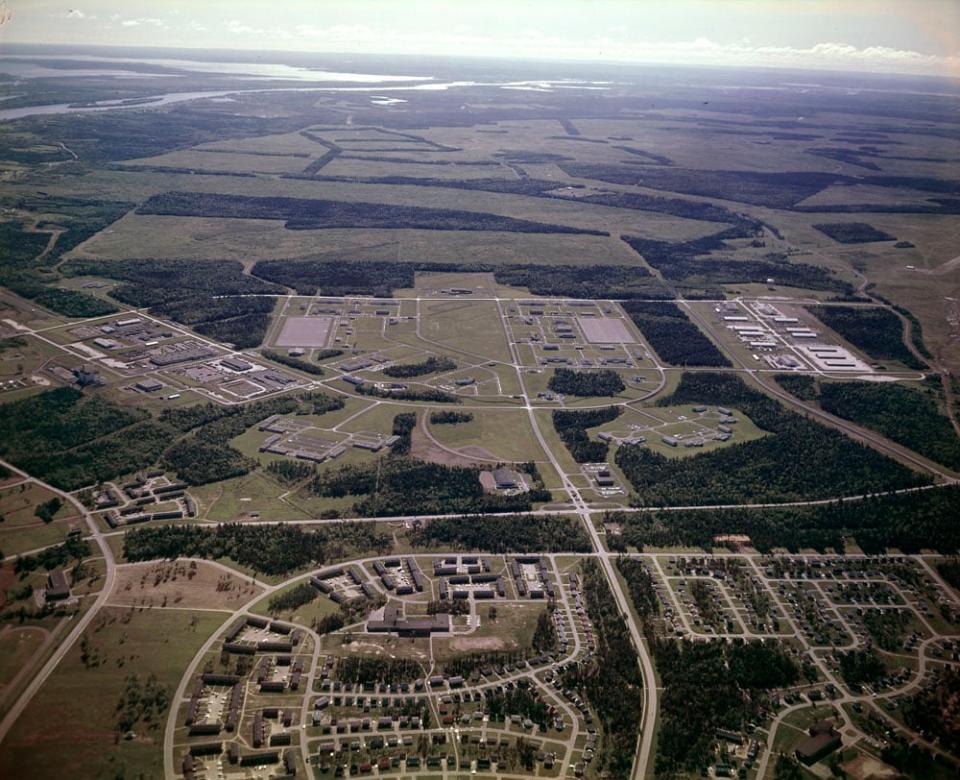
A view of CFB Gagetown in the 1960s, when the spraying took place. (Library and Archives Canada)
"Given the comprehensive nature of this report, an additional inquiry is not planned at this time."
"The Government of Canada is steadfastly committed to ensuring that all those who may have been affected by the past use of registered and unregistered herbicides at Base Gagetown receive the support that they need," McKelvey added.
DND could not say how many Maine National Guard members have trained at Base Gagetown over the years or continue to train there each year.
The data is "not tracked centrally," another spokesperson said.
Putting soldiers at risk before war
Meg Sears, who has a PhD in biochemical engineering and is chair of the advocacy group Prevent Cancer Now, based in Ottawa, contends further study would be "wise."
"We are putting our service people at risk before they even go to war, just in the process of their training, which I find very highly concerning," she said, referring to the long life of the chemicals, and noting Base Gagetown is the second largest military base in Canada, with a training area of more than 1,000 square kilometres.
"They're sleeping in the dirt, they're breathing it, they're drinking water and they're very, very highly exposed to these highly toxic persistent chemicals."
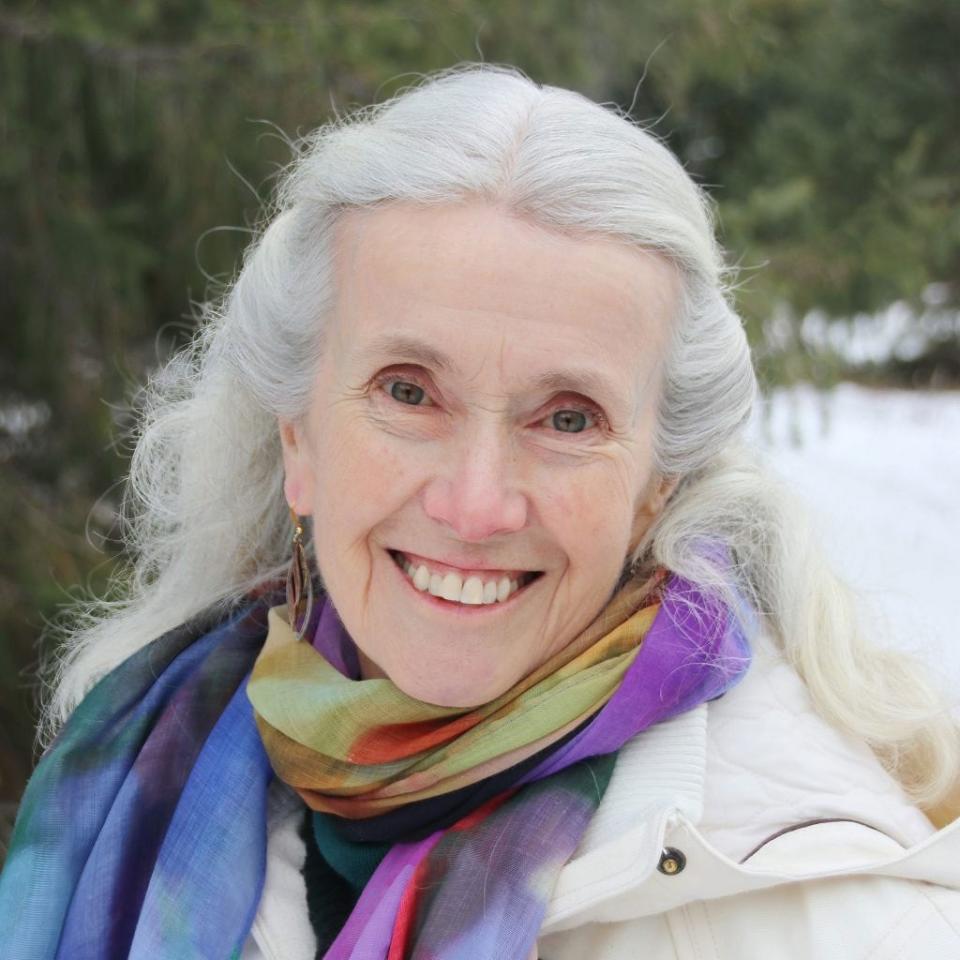
Meg Sears, a biochemical engineer, told the Maine commission that the Agent Orange exposure estimates in the Canadian report are 'not reasonably accurate.' (Prevent Cancer Now)
Sears, who has worked in environmental and human health for decades, told the Maine commission the Fact-Finders' epidemiological study that found most people were not at risk for long-term health effects was "fatally flawed."
"They didn't actually consider the veterans or the people who were still in active service who had been training at CFB Gagetown," she said, but rather compared the health of all Oromocto-area residents to the rest of the province, even though many veterans and soldiers had likely already moved elsewhere.
A study of fish, eels and clams done as part of the Fact-Finders' report was also scientifically faulty, according to Sears, who alleges it was purposely manipulated to ensure the results aligned with the overall project's conclusions that most people were not at risk.
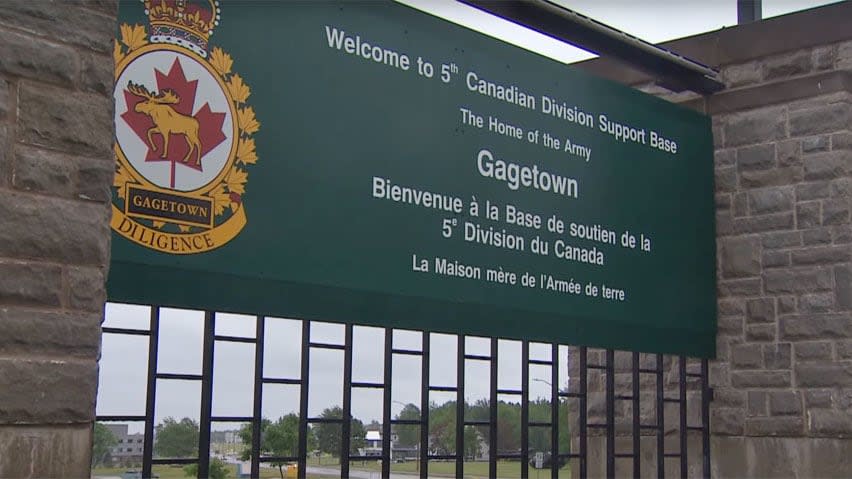
About 1,000 National Guard members from Maine have trained at 5th Canadian Division Support Base Gagetown in Oromocto over the years, according to Gary Goode. (CBC)
That study concluded there was no significant difference in the dioxin concentrations in fish, eels and clams upstream and downstream of CFB Gagetown. But some samples were arbitrarily skinned, thereby removing fatty tissue, where toxic chemicals tend to gather, before being tested, resulting in inaccurate results, she said.
The amounts of fat were included in the appendix, however, which enabled Sears to do her own calculations. "And when I did that, it's blatantly clear that the fish, eels and [clams] downstream of CFB Gagetown were much more polluted with dioxins," she said.
"It was never done properly the first time, so it would be quite relevant to do now. Quite apart from the benefit of the people serving and training at CFB Gagetown, it would be really important for the people who are living around there and who are eating these fish and [clams] and eels."
Other recommendations
Maine's Gagetown Harmful Chemical Study Commission also recommended the U.S. Department of Veterans Affairs provide access to medical care and assistance to members of the National Guard who have trained at Base Gagetown and who have been diagnosed with a condition or illness associated with exposure to tactical herbicides or exposure to other dioxins.
The Maine National Guard began training at Base Gagetown in 1971 and continues to use the base as a training site, as do National Guard units from other states, including Massachusetts and Connecticut.
Hundreds of Maine National Guard members became ill after training at Base Gagetown but Veterans Affairs has denied their claims, citing the Canadian data.
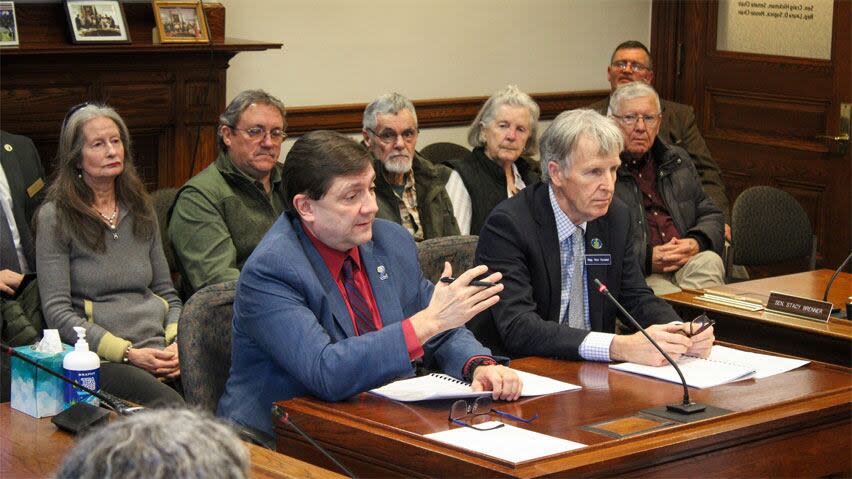
Maine Senate president Troy Jackson (blue blazer), pictured here presenting the final report of the Gagetown Harmful Chemical Study Commission with co-chair House member Ronald Russell, said a lot of people in his northern district trained at Base Gagetown. (Troy Jackson/Facebook)
The commission, which also heard presentations from U.S. government officials, the supervisor of Veterans' Services and a man who grew up on the base, further recommended a registry of all National Guard members who served at the base should be re-established, and that the commission itself should be re-established and expanded by two members with expertise in exposure to hazardous chemicals.
"Too often this issue has come before the Legislature and failed to achieve any forward progress," it said. "Reestablishing the commission would ensure a continuity of purpose and action."
'Still work to do in seeking justice'
The legislative committee accepted the commission's report.
"I am very glad that the committee agrees that there is still work to do in seeking justice for Gagetown service members and their families," co-president and Senate president Troy Jackson posted on social media at the time.
Jackson was unavailable for an interview, but in December, when the committee was still finalizing its recommendations, he told CBC News he had never served on a more meaningful commission in 20 years.
"It's clear to me that something is wrong with the way things are going here," he said. "These people deserve to be heard and get the services that that they should have had all along."
Jackson described the recommendation for further study as "the biggest" one because "both governments are basing everything off of that fact-finder study that the levels were acceptable. But we heard testimony after testimony, read, you know, different reports, saying that there weren't."
The commission heard about animals, such as deer and rabbits, and trees that were "constantly dying" without explanation, "strange substances" in the water, and people later suffering health problems, such as lung and prostate cancer, he said.
Jackson stressed he's "not trying to point a finger at any government," but rather make sure the people he represents "get the help they deserve."
He also urged people on both sides of the border to write their elected officials to "get this rectified."

